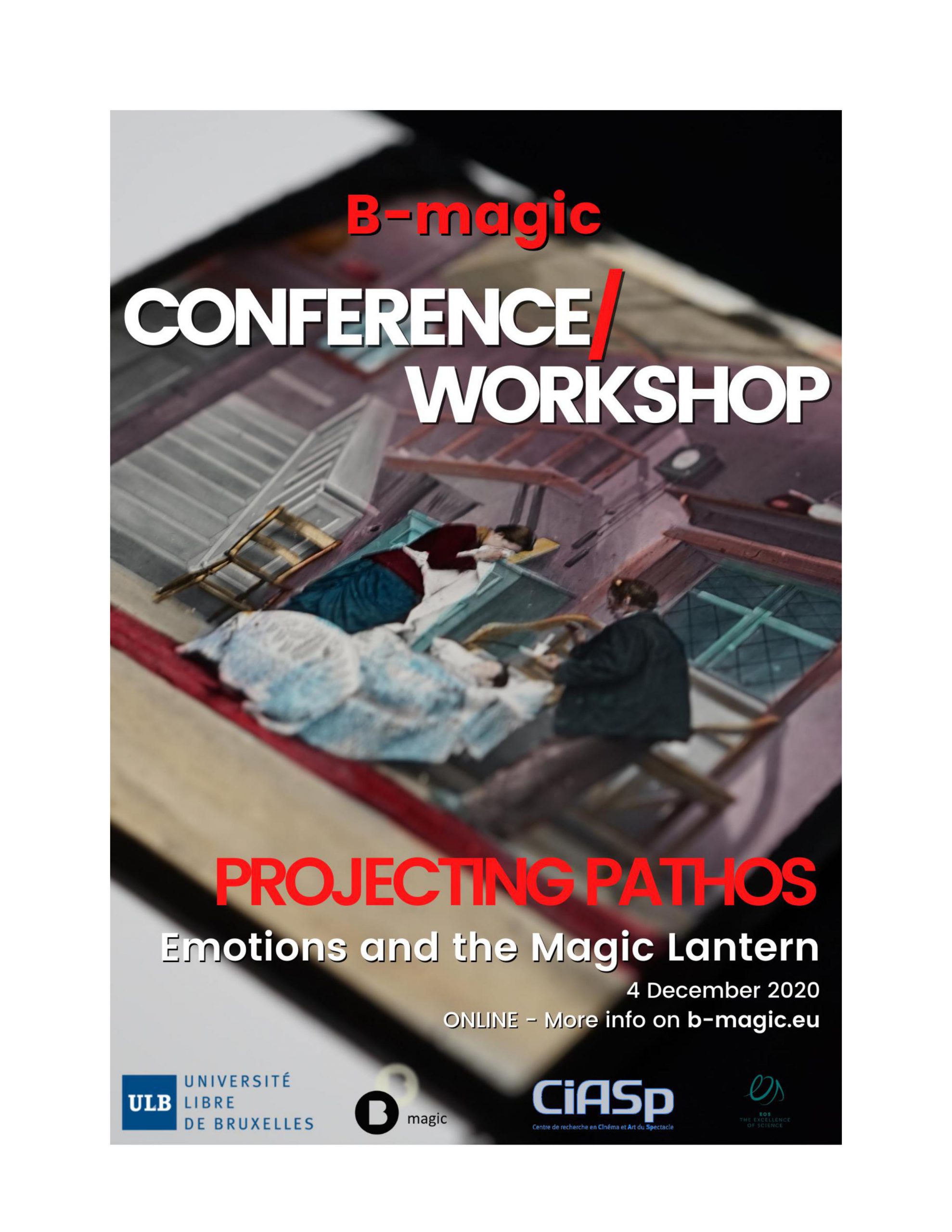22 décembre 2022 - Magical Christmas - Lanterne magique et cinématographique

Projet EOS B-magic - Publication: "Faith in a Beam of Light: Magic Lantern and Belief in Western Europe, 1860-1940"
Nouvelle publication dans le cadre du projet EOS B-magic :
Faith in a Beam of Light: Magic Lantern and Belief in Western Europe, 1860-1940 (Sabine Lenk et Natalija Majsova eds.), Turnhout, Brepols, 2022 + 291 pp., ISBN: 978-2-503-59908-3 (hardback), ISBN: 978-2-503-59909-0 (e-book)
Parue dans la série Media Performance Histories, l’ouvrage
Faith in a Beam of Light: Magic Lantern and Belief in Western Europe, 1860-1940
est édité par Sabine Lenk (ULB et UA) Natalija Majsova (Université de Lubljana) et comprend des contributions de Dominique Nasta, Bart Moens et Sabine Lenk.
Les institutions religieuses, la franc-maçonnerie, les groupes d’intérêts politiques et les institutions d’enseignement ont souvent utilisé des conférences enrichies d’images projetées afin de diffuser des informations et d’illustrer l’essence de leurs convictions et de leurs doctrines. Dix-neuf auteurs analysent les effets de la projection lumineuse dans le contexte des croyances en tout genre. L’attention est portée sur le large éventail de lieux où les projections avaient lieu, ainsi que sur l’impressionnante polyvalence des usages de la lanterne magique. Les chapitres abondamment illustrés réunis dans ce volume, vont de l’analyse de la propagande religieuse aux conférences destinées à collecter des fonds pour le travail des missionnaires en Chine, de la lutte contre l’alcoolisme à la sécularisation de la société, et de l’application de la lanterne dans les séances de spiritisme à son utilisation pour la science et l’enseignement.
Le livre peut être consulté en accès libre via le site web de Brepols, et peut être commandé en format papier à partir du même site : https://www.brepols.net/products/IS-9782503599083-1
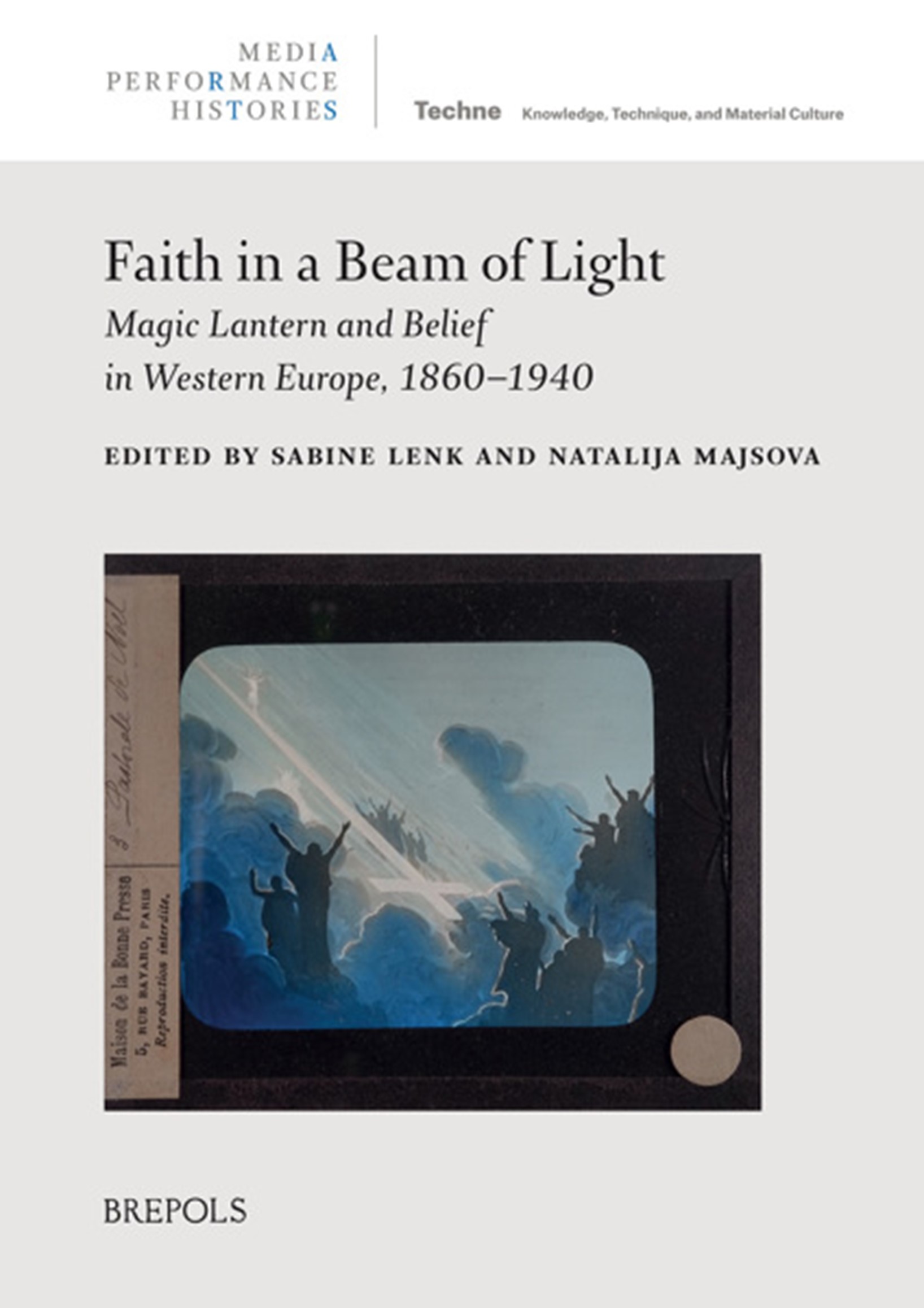
4 mai 2022 - CINEMATEK - B-magic Conference
4, 5, 6 & 7 mai 2022 - B-magic Final Conference Programme
Bart Moens - "La numérisation des plaques de lanterne magique de la Cinémathèque royale de Belgique"
En janvier 2021, le projet de recherche EOS B-magic a initié une campagne de numérisation d’environ un millier de plaques provenant de la collection de la Cinémathèque royale de Belgique – CINEMATEK. Découvrez tous les détails dans l’article de Bart Moens et Evelien Jonkheere (UA) ICI
B-magic - Newsletter #7
Symposium: "Projecting Pathos: Emotions and the Magic Lantern" - 4 décembre 2020 - En ligne
Projecting Pathos: Emotions and the Magic Lantern
International online conference-workshop: December 4, 2020, 10:00 – 17:00
Please register here or at www.b-magic.eu by 02.12 to receive an invitation to participate in this online B-magic event.
Projecting Pathos will focus on the role of emotions in magic lantern performances. This international and interdisciplinary workshop is organized by the Centre de recherche en Cinéma et Arts du Spectacle (CiASp) of the Université libre de Bruxelles, within the framework of the EOS-funded project B-Magic: The Magic Lantern and its Cultural Impact as Visual Mass Medium in Belgium (1830-1940), and will explore the emotional strategies used during lantern performances, as well as their impact on the spectators. It will bring together prominent scholars working in different fields related to the magic lantern and emotions: media archaeology and the history of emotions.
The magic lantern was used by performers, by teachers and by various social groups to entertain and propagate knowledge, emotional norms and values. In doing so, magic lantern performances did not only represent emotions visually and through voice and text, they also produced them, having effects on the emotional state of the spectator. The medium’s potential to provide emotional experiences for diverse audiences lies at the core of its power and appeal. Recognizing the role of emotions is essential in order to explore the cultural impact of the magic lantern. So far, Belgian slide collections have yielded a wealth of material for this area of research. Yet, the emotional scope of the magic lantern performance and the strategies to stimulate and steer emotions have seldom been tackled in media studies.
Keynote lectures will be held by: Anja Laukötter (Max Planck Institute for Human Development, Berlin and University of Strasbourg), Richard Crangle (Independent researcher and Magic Lantern Society) and Vito Adriaensens (Columbia University and ULB). Furthermore the conference-workshop presents live online presentations by B-magic principal investigators and researchers, as well as moderated Q&A sessions.
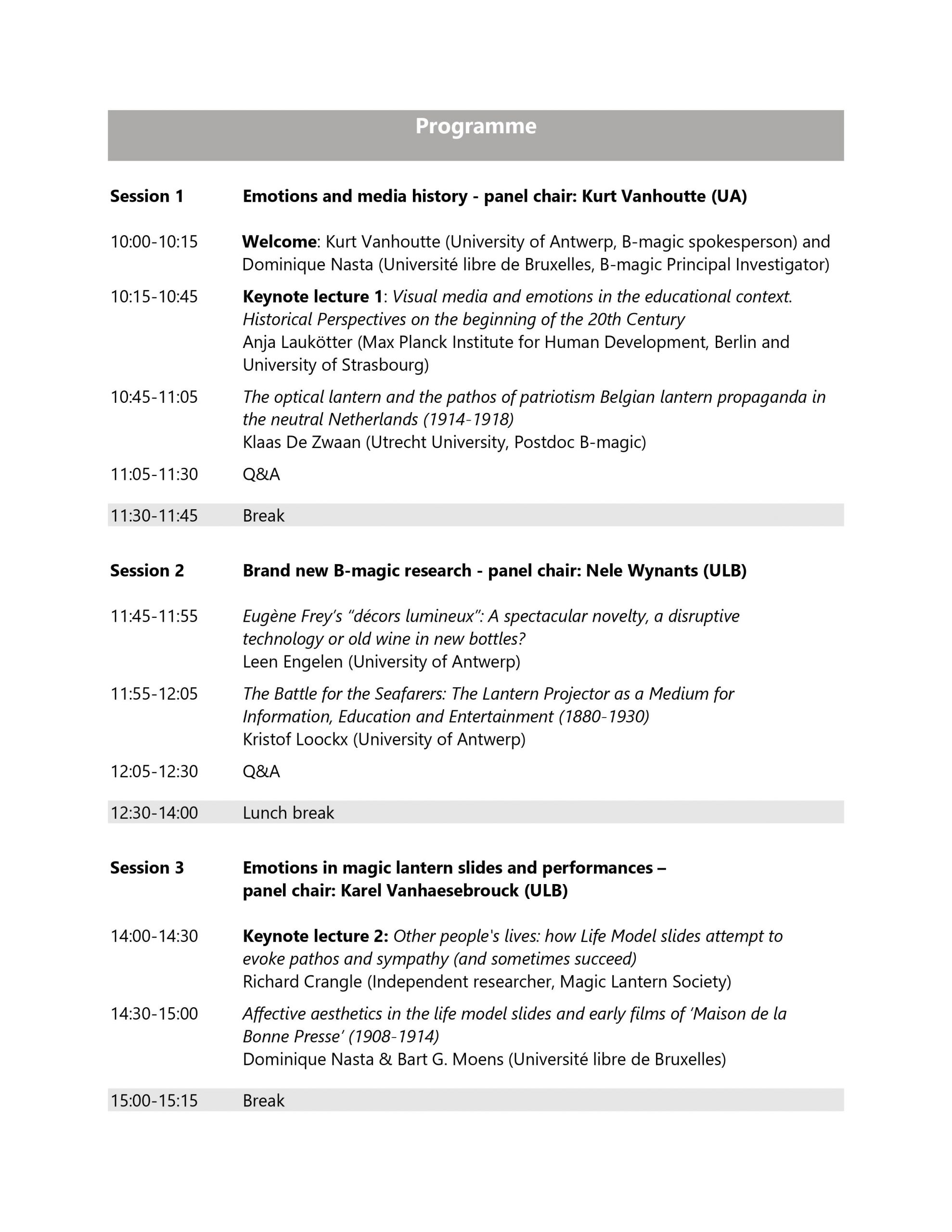
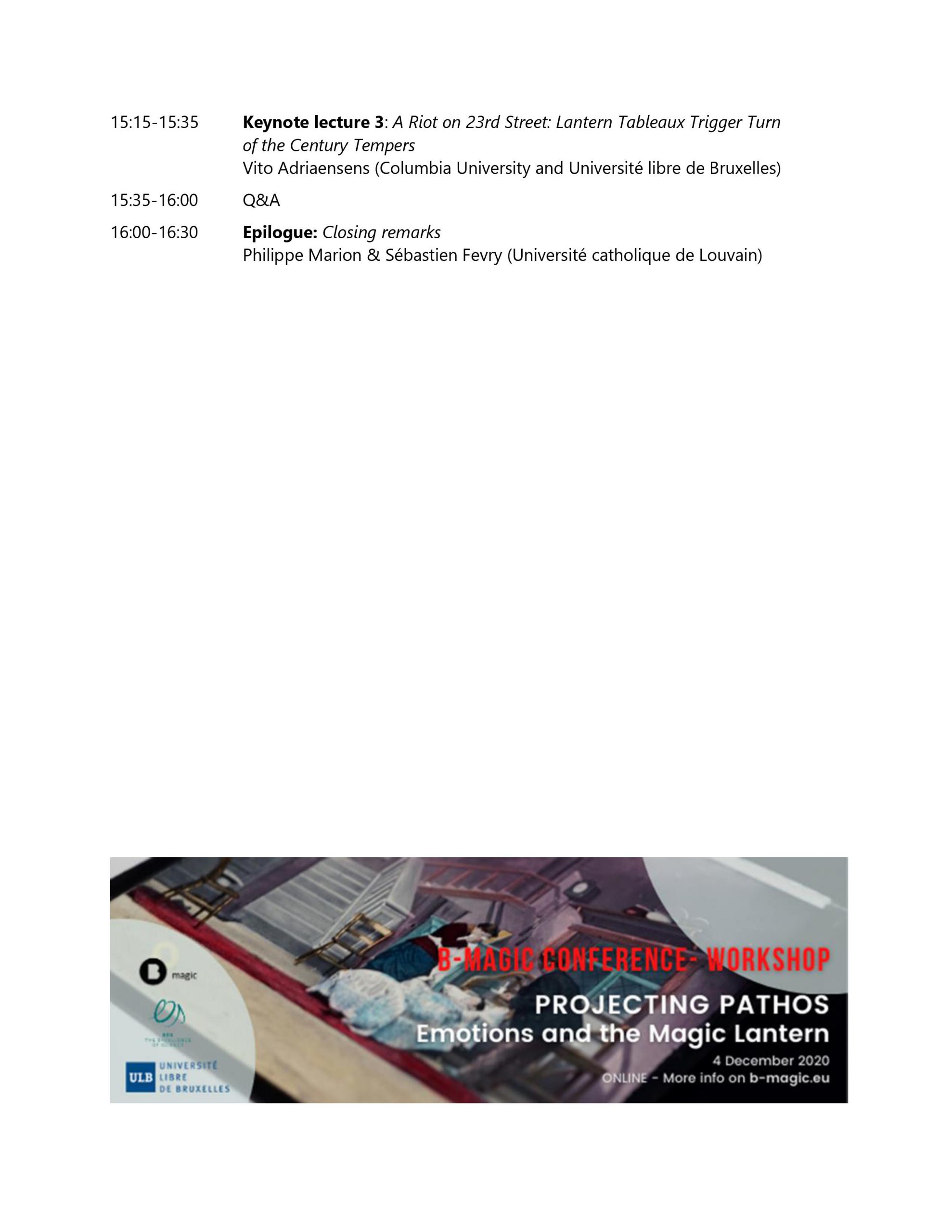

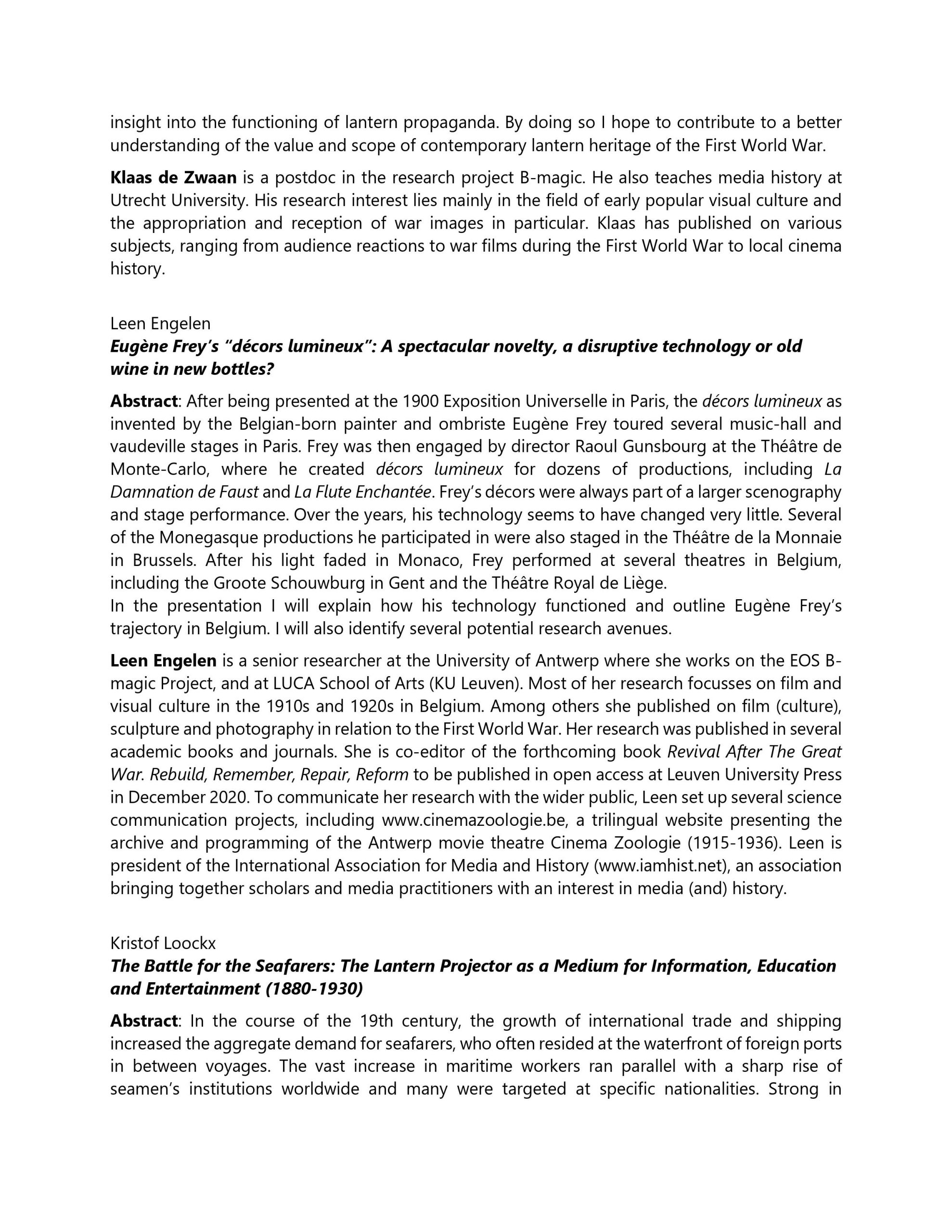
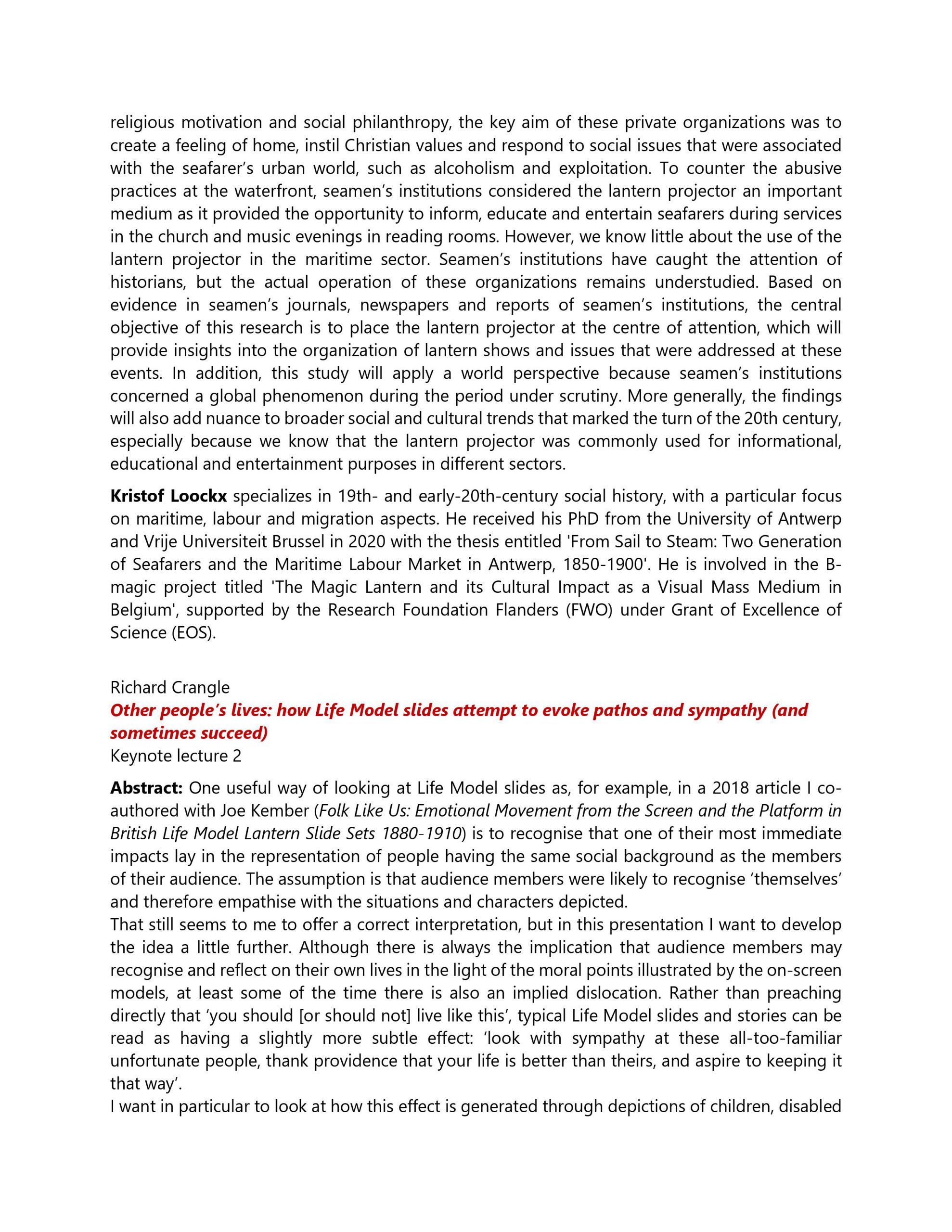
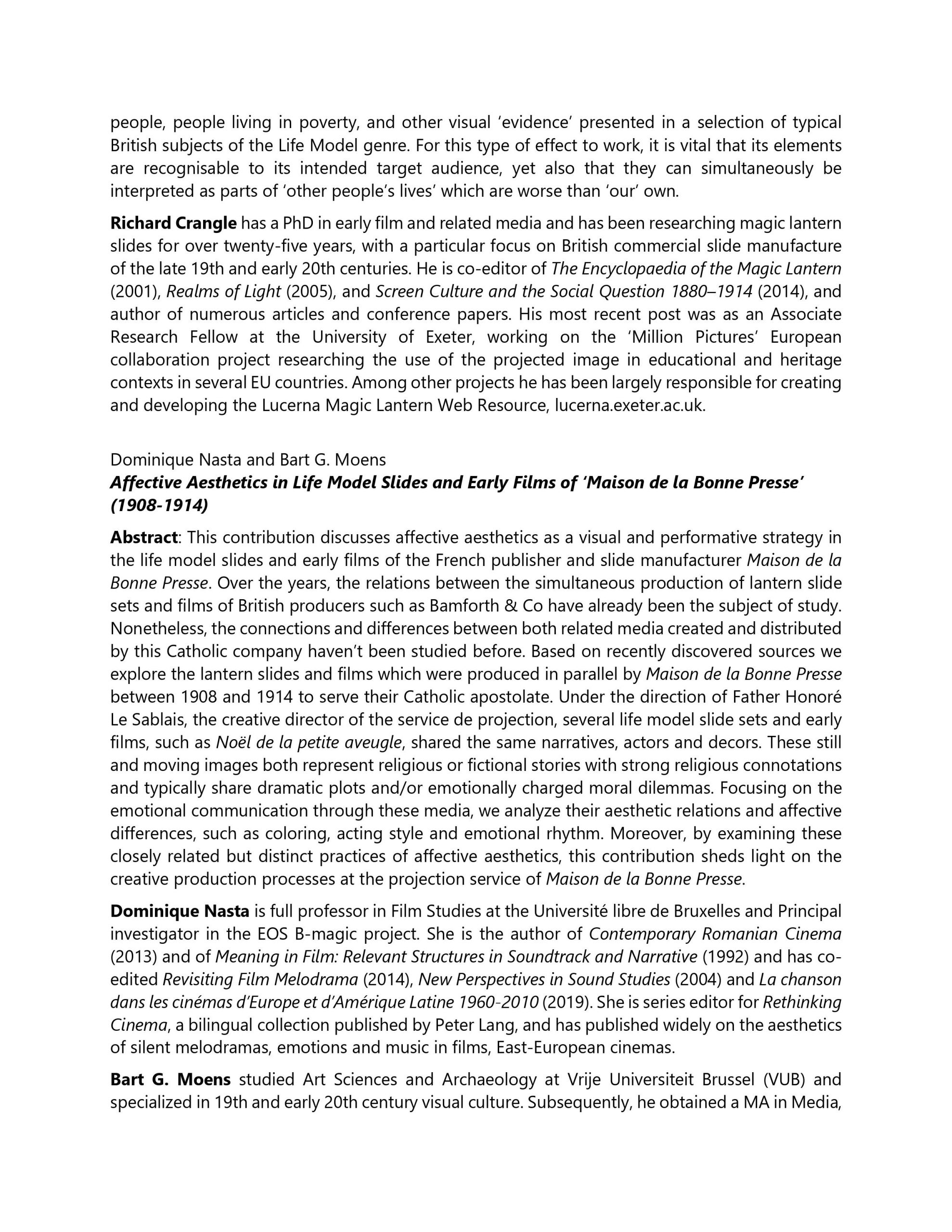
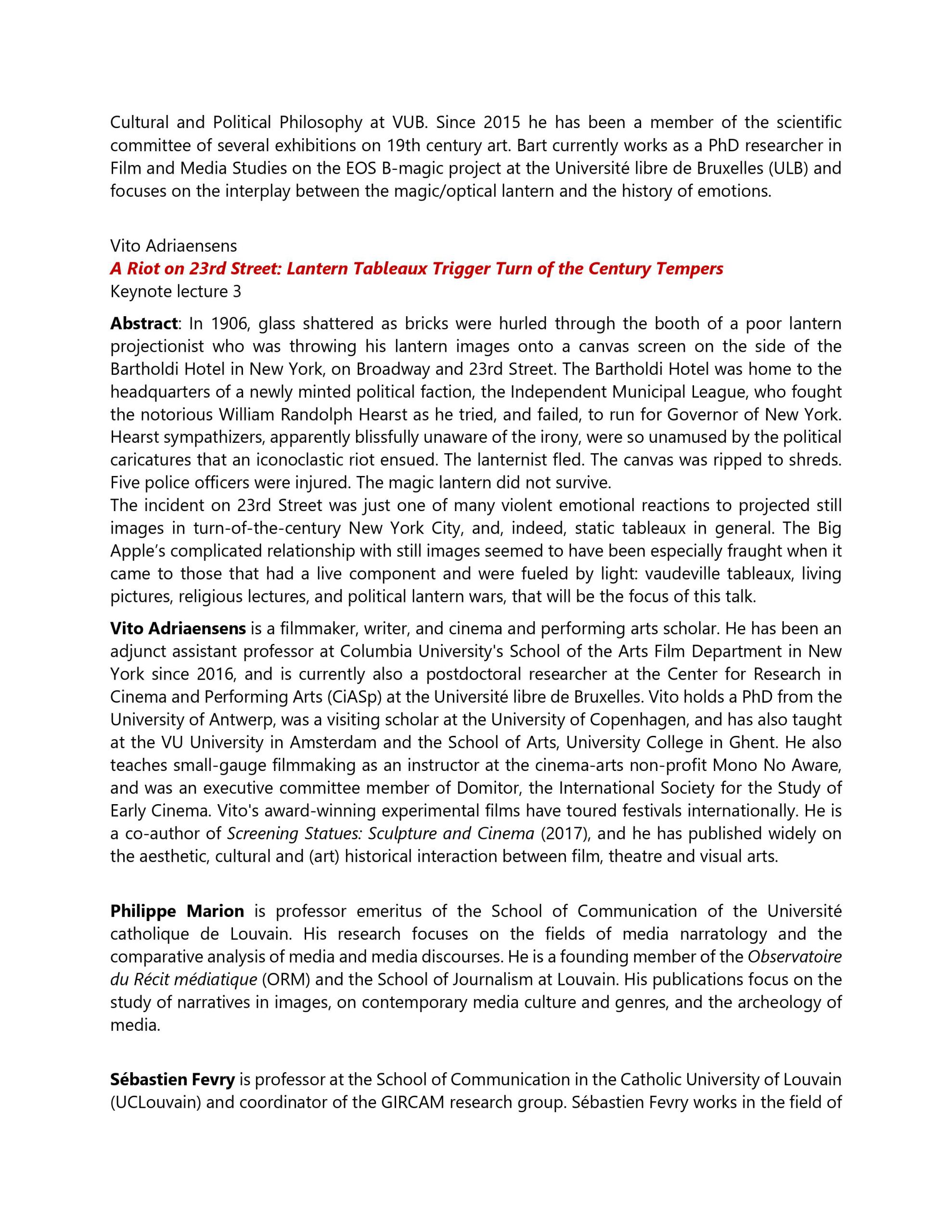
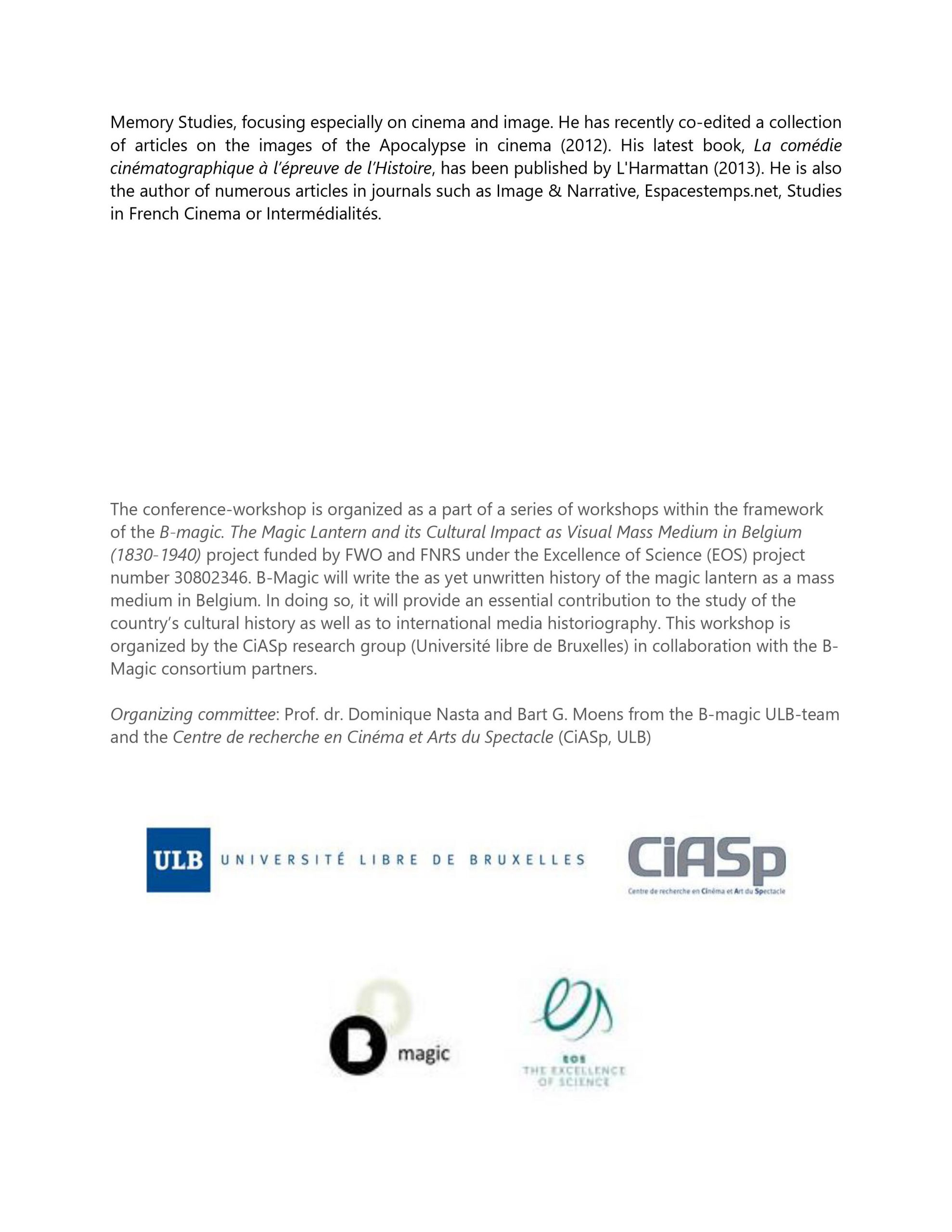
Symposium: "Projecting Pathos: Emotions and the Magic Lantern - 15 & 16 mai 2020 - Cinematek
Symposium: « Projecting Pathos: Emotions and the Magic Lantern »
Date: 15-16 May 2020
Venue: CINEMATEK, Rue Baron Horta 9, 1000 Brussels
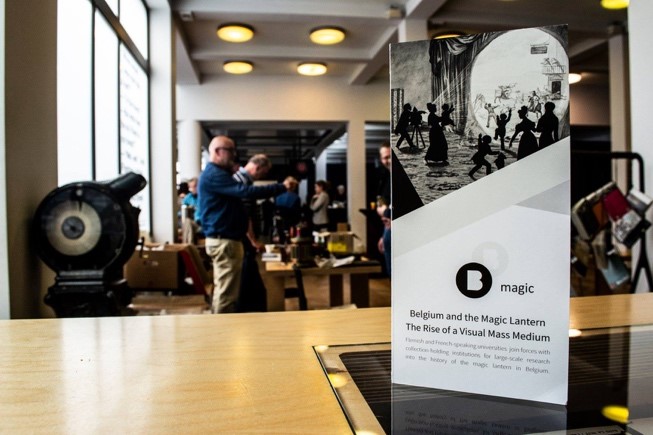
The fifth workshop organized within the framework of the EOS-funded B-Magic project will focus on the role of emotions in magic lantern performances and is organized by the B-magic ULB Cinema team and the Centre de recherche en Cinéma et Arts du Spectacle (CiASp) of the ULB. This interdisciplinary workshop will explore the emotional strategies used during lantern performances, as well as their impact on the spectators, and therefore brings together scholars working in different fields related to the magic lantern and emotions: media archaeology, the history of emotions and the cognitive sciences.
The following keynote speakers have confirmed their attendance: André Gaudreault (Université de Montréal), Anja Laukötter (Max Planck Institute), Johannes Riis (University of Copenhagen) and Valentine Robert (Université de Lausanne).
Besides, an exceptional magic lantern performance will be produced in collaboration with the Canada Research Chair in Cinema and Media Studies of the Université de Montréal and the Pôle de recherche en communication (PCOM) of the UCLouvain.
More information about the programme of the workshop will be available in due time on the B-magic website: www.B-magic.eu
NEWS B-magic ULB-team
NEWS B-magic ULB-team
The B-magic team at ULB’s Research Centre for Cinema and Performance Studies (CiASp) looks back on a successful and very productive research year: we organized a two-day symposium with international guests, performances and exhibitions, discovered the important lantern slide collection kept in the ULB Archive, acquired extra research funding (FER) for the digitization of this wonderful collection and contributed to the Jules Bordet exhibition at the ULB. Please find below a summary of what happened in the B-magic offices and what’s on the agenda next year.
Past Events
Symposium: Lanterns at the Fairground
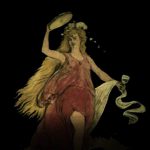

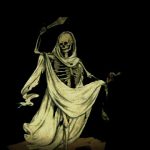
On 5 and 6 April 2019, the Lanterns at the Fairground symposium organised by Nele Wynants and Marte Van Hassel gathered 140 well-known international academics, collectors, artists and lanternists at the Brussels Cinematek and Greylight Projects exhibition space. It featured scientific presentations with keynote lectures by Vanessa Toulmin, David Jones, Jeremy Brooker and Guido Convents, a workshop and lantern demonstrations by Karin Bienek and Ludwig Vogl-Bienek, Bernd Scholtze and Helmut Waelde, an exhibition curated by Julian Ross, a phantasmagoria show by Jeremy and Carolyn Brooker, a film screening by Sarah Vanagt, book launches, a media archaeology market and a book fair in cooperation with the Magic Lantern Society. A short video report of the events can be found below, and a report can be read here.
Images from Jeremy and Carolyn Brooker’s Phantasmagoria show at Greylight Projects in Brussels.
Re-discovery of the ULB slide collection and exhibition Jules Bordet
Thanks to B-magic team member Sabine Lenk, visitors of the exhibition “Les cent ans d’un Nobel. Jules Bordet, un pastorie à l’ULB” at the Salle Allende on ULB’s Solbosch Campus, will also learn about the impact of the magic lantern at ULB. The re-discovery of the important lantern slide collection kept in the ULB Archive, and the activities organized for its preservation by the B-magic team, has led the curator Nathalie Levy to open a small section for the reflection on the lantern as teaching tool. Most of the ULB slides were produced by researchers such as Abraham Léo Errera (biology), Jean Massart (biology), and Émile Waxweiler (biology, sociology), all of whom worked at the “scientific city” situated at Parc Léopold. Jules Bordet was well-known for his discoveries in bacteriology and immunology for which he received the Nobel Prize in Physiology / Medicine in 1919. His work in the 1890s was inspired by the intellectually challenging and creative atmosphere at Parc Léopold where he started his first experiments in Massart’s and Errera’s laboratories. It was within this scientific hub that professors increasingly started to rely on the photographic reproduction of their experiments on glass-plates to disseminate the results of their research through presentations using the lantern in both classrooms and at conferences. The exhibition on the life and work of Jules Bordet is open until 22 December.
Upcoming Events
Research event: « Projecting Citizenship »
Lecture by Gabrielle Moser and screening Aphasia, a film by Jelena Jureša
Date: 24 January 2020, 19:00 (lecture), 20:30 (film)
Venue: CINEMATEK, Rue Baron Horta 9, 1000 Brussels
Art historian and curator Gabrielle Moser (Canada) and artist Jelena Jureša (Yugoslavia) focus on the role of (colonial) photography and film in the construction and concealment of colonial ideas. By revisiting photographic archives, they both show the ambiguity in their histories and performative power in the present.
Magic Lanterns and Colonial Instruction: Spaces of Civic Education in the British Empire: Between 1902 and 1945 the British government’s Colonial Office Visual Instruction Committee (COVIC) distributed a series of lantern slide lectures around the British Empire. From Canada to Hong Kong, and the West Indies to Australia, the lectures were shown to school children to teach them what it meant to look – and to feel – like a citizen of the Empire. During this lecture, Gabrielle Moser will examine how the magic lantern played a central role in creating ideas of citizenship of the British Empire. She will discuss how it was possible for citizenship to become a photographable and teachable subject and how, in turn, spectators used the COVIC photographs for protest and resistance.
Aphasia is a film built up in three interwoven chapters. Each part focuses on the absurdity that arises from the collective silence surrounding crimes and the fragmentation of historical events, tracing the line between Belgian colonialism, Austrian antisemitism and the war in Yugoslavia. Focusing on the blind spots of history and the difficulty of speaking about the troubled past, the film charts the line starting with the museum dioramas in Tervuren through photography to film and, like the bullet from the FN Herstal 1910 pistol that became emblematic of the WWI, connects Bosnia, Serbia, Austria and Belgium in their seemingly disparate fates and historical amnesias.
Symposium: « Projecting Pathos: Emotions and the Magic Lantern »
Date: 15-16 May 2020
Venue: CINEMATEK, Rue Baron Horta 9, 1000 Brussels
The fifth workshop organized within the framework of the EOS-funded B-Magic project will focus on the role of emotions in magic lantern performances and is organized by the B-magic ULB Cinema team and the Centre de recherche en Cinéma et Arts du Spectacle (CiASp) of the ULB. This interdisciplinary workshop will explore the emotional strategies used during lantern performances, as well as their impact on the spectators, and therefore brings together scholars working in different fields related to the magic lantern and emotions: media archaeology, the history of emotions and the cognitive sciences.
The following keynote speakers have confirmed their attendance: André Gaudreault (Université de Montréal), Anja Laukötter (Max Planck Institute), Johannes Riis (University of Copenhagen) and Valentine Robert (Université de Lausanne).
Besides, an exceptional magic lantern performance will be produced in collaboration with the Canada Research Chair in Cinema and Media Studies of the Université de Montréal and the Pôle de recherche en communication (PCOM) of the UCLouvain.
More information about the programme of the workshop will be available in due time on the B-magic website: www.B-magic.eu
Publications
Lenk, Sabine & Frank Kessler. “Fighting the Enemy with the Lantern: How French and Belgian Catholic Priests Lectured Against their Common Laic Enemies Before 1914.” Early Popular Visual Culture, 17:1 (2019): 89-111.
Moens, Bart G. “The Luminous Colours of the Magic Lantern: Shedding light on the palette of life model slides.” Colour and Spectacle, special issue of Documenta, edited by Evelien Jonckheere and Tessa Vannieuwenhuyze, 35:2 (2019): (forthcoming).
Van Hassel, Marte. “Listening as a critique. Towards a methodology on absent presences in research on coloniality. » Documenta, 37:1 (2019): 144-167.
Van Hassel, Marte, 2019. “Review: Images of Dutchness: Popular Visual Culture, Early Cinema and the Emergence of a National Cliché, 1800–1914, by Sarah Dellmann.” Journal for Media History, 22(1), pp.112–114.
Wynants, Nele. “Review: Soma, or Imagining the Body: Oona Libens Scientific Shadow Theatre.” FORUM+ voor onderzoek en kunsten / for research and arts, 26:1 (2019): 86-89.
Wynants, Nele. “The Travelling Lantern: The Courtois and Grandsart-Courtois Family Theatre as Transcultural Mediators at the Nineteenth Century Fair.” Early Popular Visual Culture, 17:2 (2019): (forthcoming).
B-magic
B-magic. The Magic Lantern and its Cultural Impact as Visual Mass Medium in Belgium (1830-1940) is an Excellence of Science (EOS) project (grant number 30802346, 2018-2023) funded by The Research Foundation Flanders FWO and the Fonds de la Recherche Scientifique – FNRS. At eam of researchers at two Flemish and two French-speaking universities will study the cultural impact of the magic lantern in Belgium, in collaboration with an arts college and international partners.
Check our website or subscribe to the B-magic newsletter for more information and regular updates:
www.B-magic.eu
B-Magic PhD Seminar + Research Event "Projecting Citizenship" - 24 Janvier 2020
Lecture by Gabrielle Moser and screening Aphasia, a film by Jelena Jureša
24 January 2020, 19:00 (lecture), 20:30 (film)
CINEMATEK, Rue Baron Horta 9, 1000 Bruxelles
Art historian and curator Gabrielle Moser (Canada) and artist Jelena Jureša (Yugoslavia) focus on the role of (colonial) photography and film in the construction and concealment of colonial ideas. By revisiting photographic archives, they both show the ambiguity in their histories and performative power in the present.
Magic Lanterns and Colonial Instruction: Spaces of Civic Education in the British Empire: Between 1902 and 1945 the British government’s Colonial Office Visual Instruction Committee (COVIC) distributed a series of lantern slide lectures around the British Empire. From Canada to Hong Kong, and the West Indies to Australia, the lectures were shown to school children to teach them what it meant to look – and to feel – like a citizen of the Empire. During this lecture, Gabrielle Moser will examine how the magic lantern played a central role in creating ideas of citizenship of the British Empire. She will discuss how it was possible for citizenship to become a photographable and teachable subject and how, in turn, spectators used the COVIC photographs for protest and resistance.
Gabrielle Moser is a writer, educator and independent curator whose research focuses on the historical construction of citizenship as a photographable subject. Her dissertation investigates the construction of imperial citizenship in photographs produced by the Colonial Office Visual Instruction Committee. Her current research project, “Picturing race and citizenship: photography and belonging in Canada, 1900-1948,” based at the University of British Columbia and supported by a SSHRC postdoctoral fellowship, investigates how racialized subjects used their encounter with the camera to make claims for citizenship in Canada, before its legal enactment in 1948. Moser holds a PhD in art history and visual culture from York University and teaches at OCAD University.
Aphasia is a film built up in three interwoven chapters. Each part focuses on the absurdity that arises from the collective silence surrounding crimes and the fragmentation of historical events, tracing the line between Belgian colonialism, Austrian antisemitism and the war in Yugoslavia. Focusing on the blind spots of history and the difficulty of speaking about the troubled past, the film charts the line starting with the museum dioramas in Tervuren through photography to film and, like the bullet from the FN Herstal 1910 pistol that became emblematic of the WWI, connects Bosnia, Serbia, Austria and Belgium in their seemingly disparate fates and historical amnesias.
Jelena Jureša is a visual artist born in Novi Sad (Yugoslavia) who lives and works in Ghent. She has been extensively working with the questions of identity, politics of memory and oblivion through the media of photography, video and text. Being an artist who works with history and with archives, Jureša investigates the notion of truth on the verge of representation, hence combining private memories with artifacts and political and historical narratives.
PhD Seminar by Gabrielle Moser 15h00 – 17h00
Lecture by Gabrielle Moser 19h00 – 20h00
Introduction + screening Aphasia by Jelena Jureša 20h30 – 22h30
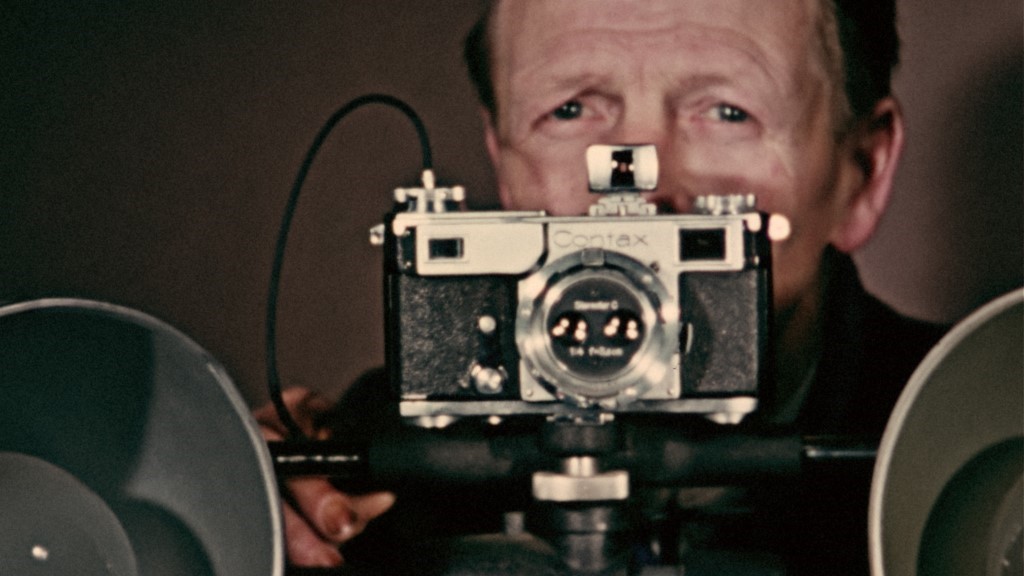
© Aphasia, Jelena Jureša
B-magic contribution to exhibition at Université Libre de Bruxelles
When the exhibition “Cent ans d’un prix Nobel » on professor of medicine Jules Bordet” will open on 8 October 2019 at the Salle Allende on ULB’s Solbosch Campus in the heart of Brussels, visitors will learn also about the impact of the magic lantern at ULB. The re-discovery of the important lantern slide collection kept by the ULB Archive, and the activities organised for its preservation by B-magic team member Sabine Lenk, led the curator Nathalie Levy to open a small section for the reflection on the lantern as teaching tool. Most of the ULB slides were produced by researchers such as Abraham Léo Errera (biology), Jean Massart (biology), Émile Waxweiler (biology, sociology), working at the “scientific city” situated at Parc Léopold. Jules Bordet, well-known for his discoveries in bacteriology and immunology for which he received the Nobel Price in Physiology / Medicine in 1919, was inspired in his work in the 1890s by the intellectually challenging and creative sphere at Parc Léopold where he started his first experiments in Massart’s and Errera’s laboratories. It is in this scientific nucleus that progressively professors started to rely on the photographic reproduction of their experiments on glass-plates to disseminate the result of their research by presentations with the lantern in class and at conferences. The exhibition on the life and work of Jules Bordetwill be open until 22 December.
More information on the events celebrating Jules Bordet: https://actus.ulb.be/fr/presse/communiques-de-presse/recherche/100-ans-nobel-jules-bordet-invitation-vernissage-seance-academique
Research Event “B-magic” - Encounter with Raf Vanderstraeten on “Pillarization” - ULB – Solbosch on Tuesday, 10 September 2019 – 14.30 to 17.00
Lanternes à la fête foraine - 5 & 6 avril 2019
Artistes itinérants, médiateurs culturels dans l’Europe du 19e et du début du 20e siècle
Date : 5-6 avril 2019
Lieu : Cinematek, Bruxelles : Rue Baron Horta 9, 1000 Bruxelles – Belgium
Ce symposium explorera le rôle de la lanterne magique dans les spectacles forains itinérants, comme forme de diffusion des connaissances et d’échange culturel au 19e et au début du 20e siècle. Sur les champs de foire, les attractions, les spectacles et les découvertes scientifiques se partageaient la scène. Chaque année, des forains itinérants présentaient avec enthousiasme des nouveautés spectaculaires, allant des physiques amusantes aux spectacles de curiosités, en passant par les théâtres optiques et mécaniques, les musées ethnographiques et d’anatomie, les tours à vélo, les carrousels à vapeur et, enfin, le cinéma. Le divertissement itinérant a donc joué un rôle actif et modernisateur dans la diffusion et la popularisation des valeurs culturelles, du savoir et de la science parmi les masses illettrées. Pendant la Belle Époque en particulier, la foire était présentée comme un « monde condensé » où l’on promettait à la foule de découvrir les derniers miracles de la science et de la technologie. Ces merveilles s’affichaient sur les chevalets des cabinets de curiosités, derrière les fenêtres des musées d’anatomie, ou s’exposaient le long des panoramas peints ou sur les façades des théâtres itinérants. L’intérêt pour le spectaculaire, si caractéristique de ces spectacles, offrait une initiation populaire au monde des sciences naturelles et des sciences humaines. Ce n’est pas un hasard si ces initiations étaient souvent ancrées dans le monde de la magie, les croyances populaires et le spiritisme.
Le caractère ambivalent de la fête foraine tient à son évolution historique. D’une part, la foire ou fête foraine renvoie à d’anciennes traditions de festivités religieuses ou de fêtes de la moisson, organisées en relation avec d’importantes foires commerciales qui marquèrent l’essor du commerce à partir de la fin du Moyen-Âge. D’autre part, nombre des techniques intégrées sont étroitement liées à la révolution industrielle et à sa mécanisation. En Europe, la « Fun Fair » ou « Jahrmarkt » est particulièrement bien ancrée dans les pays d’Europe occidentale, comme la Belgique, la France, l’Allemagne et l’Angleterre. L’apparition des premières fêtes foraines dans le contexte de la modernité industrielle du 19e siècle suivait donc une double logique, combinant anciennes traditions rurales et transformations inhérentes aux révolutions technologiques. Les nouveaux développements scientifiques et technologiques s’intègrent dans des rituels culturels plus anciens, ouvrant la voie à des expériences liminales à mi-chemin entre tradition et progrès.
De nombreux spectacles itinérants de divertissement recouraient à la technologie de la lanterne magique, bien que les annonces dans les journaux et les affiches publicitaires ne le démontrent pas clairement. C’est pourquoi l’utilisation de cette technologie dans les fêtes foraines est restée étonnamment peu étudiée. Pourtant, les artistes itinérants s’appropriaient les dispositifs et technologies optiques qui débarquaient sur le marché du spectacle européen. Ce faisant, ils diffusaient un savoir culturel et contribuaient à un échange d’idées entre les villes européennes et lors des foires annuelles organisées dans des villages ou villes de plus petite taille. Ainsi, en se basant sur les réseaux forains internationaux, ces artistes itinérants importaient et exportaient des techniques, valeurs et idées d’un endroit à l’autre. Ils attiraient souvent des spectateurs qui n’auraient pas pu s’offrir une place dans un théâtre ordinaire. C’était à la foire foraine que les visiteurs pouvaient admirer, souvent pour la première fois, des images de pays lointains ou des représentations des populations locales des colonies. Ils pouvaient également apprécier les démonstrations scientifiques de soi-disant physiciens, chimistes ou astronomes, entremêlées d’expériences surnaturelles. Présentées comme des séances scientifiques, les ombres lumineuses projetées par la lanterne permettaient souvent au public profane d’entrer en contact avec le monde spirituel, l’au-delà ou même des âmes du passé.
Ce symposium s’attachera au rôle des artistes itinérants adeptes de la lanterne en tant que médiateurs culturels dans l’Europe du 19e et du début du 20e siècle. Comment se sont-ils approprié la science et la technologie et comment les ont-ils diffusées auprès d’un public profane ? Comment ont-ils véhiculé des valeurs culturelles, esthétiques et morales à travers les frontières nationales ? Comment ont-ils combiné de plus anciennes traditions visuelles, comme le cabinet de curiosités, avec les nouveaux développements technologiques ? Comment ont-ils contribué à la formation d’une culture visuelle commune en Europe occidentale ? Nous accorderons une attention particulière à la relation complexe, mais bien vivante, entre la science et le rituel, entre le savoir et le surnaturel, entre la connaissance et les croyances. Notre but est de dévoiler comment l’expérience liminale s’imbriquait dans les mondes de la science et du divertissement, et interagissait subtilement avec ces deux univers.
Le programme de ce symposium de deux jours sera alimenté par diverses contributions d’académiciens de renom international, de collectionneurs et de performeurs, réunissant le monde du théâtre, du cinéma des premiers temps et de la culture visuelle de masse, devant un plus large public.
Le symposium proposera également une journée de démonstrations de lanterne magique par des membres de la Magic Lantern Society, une exposition et des projections de films de la collection de la Cinematek, avec un accompagnement musical live.
***
Le symposium est organisé par le THEA Joint Research Group et le CiASp – Centre de recherche en Cinéma et Arts du Spectacle (Université libre de Bruxelles), en collaboration avec les partenaires du consortium B-Magic.
Le programme complet de ce symposium sera bientôt publié sur ce site. Pour plus d’informations, veuillez contacter Nele Wynants (nele.wynants(a)ulb.ac.be ).


















